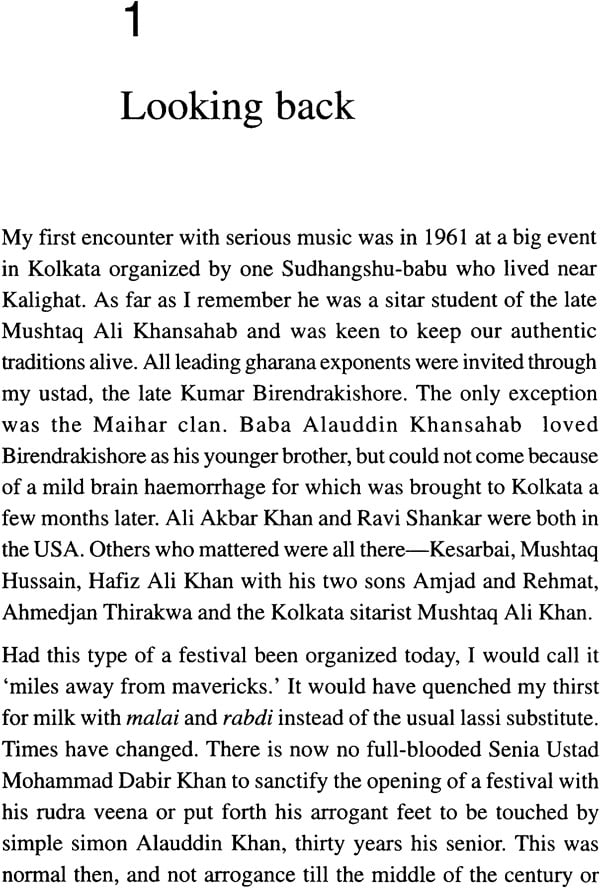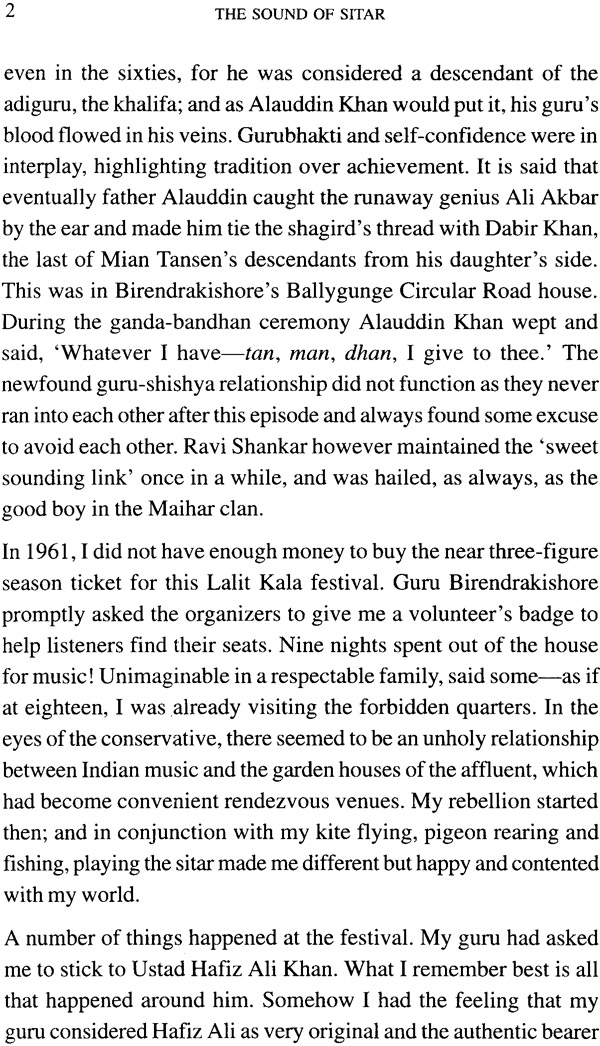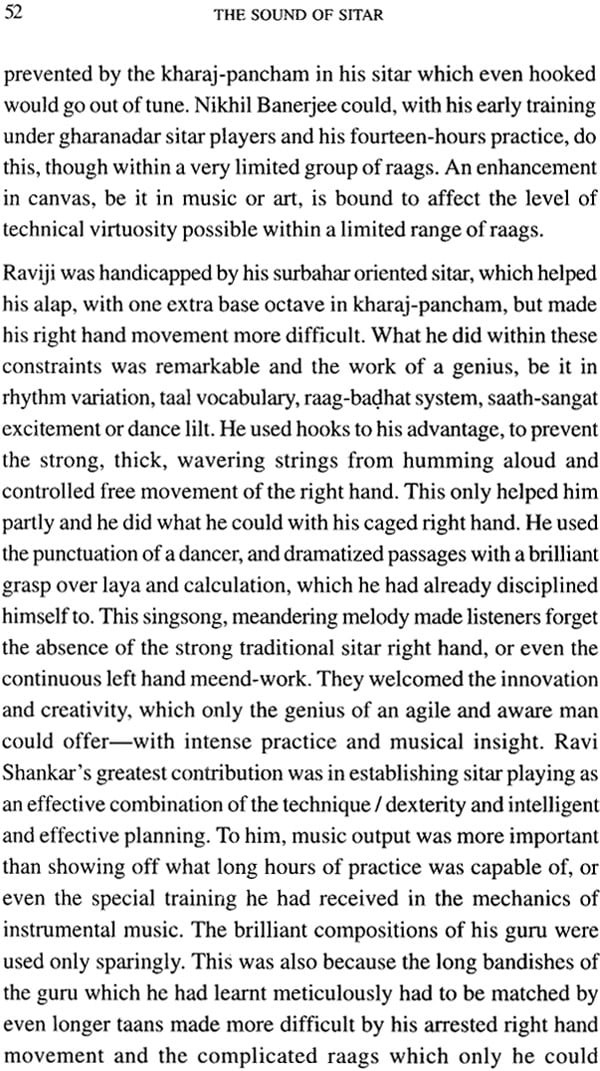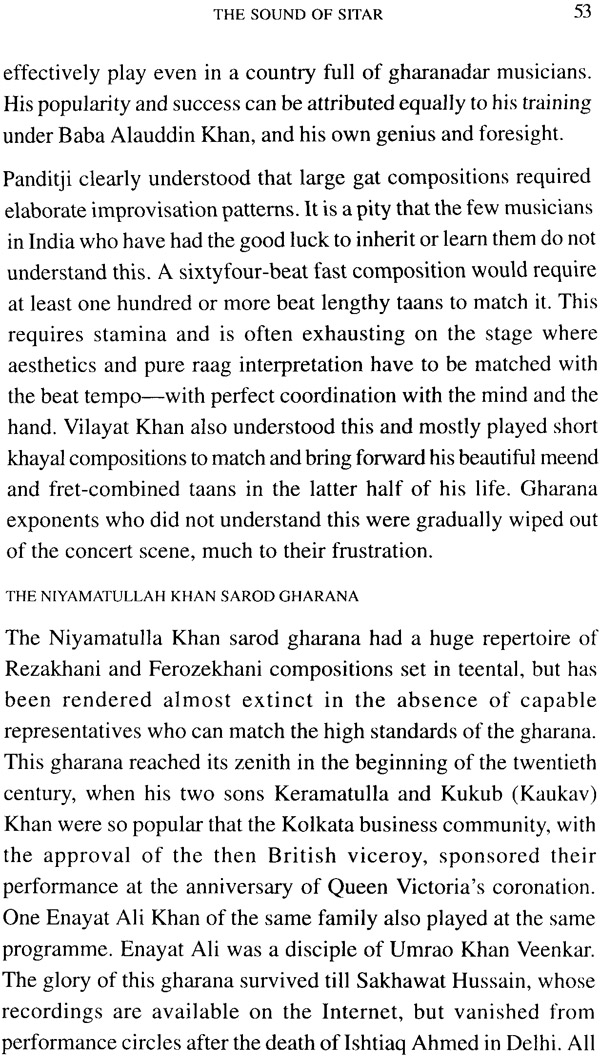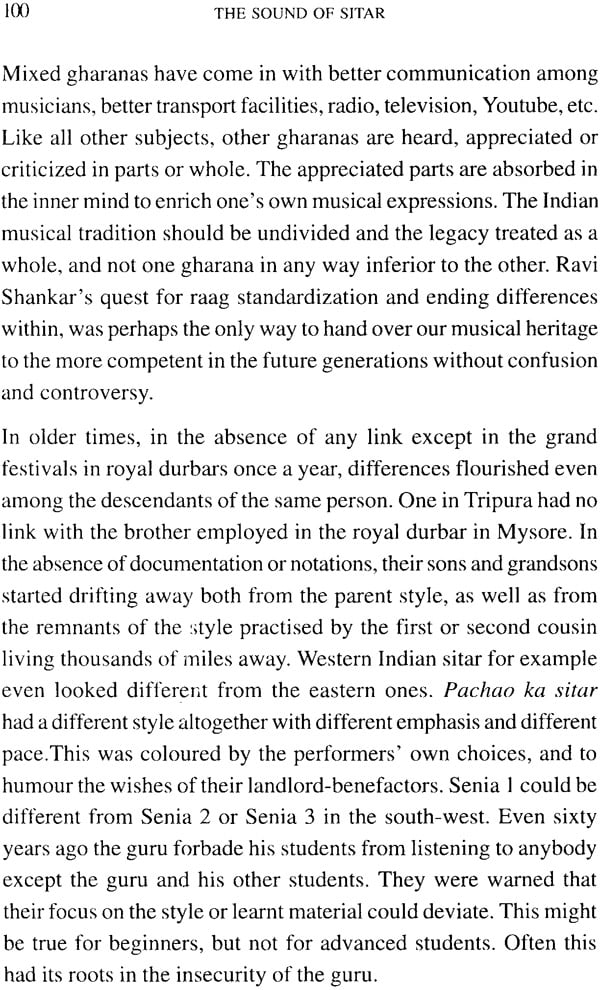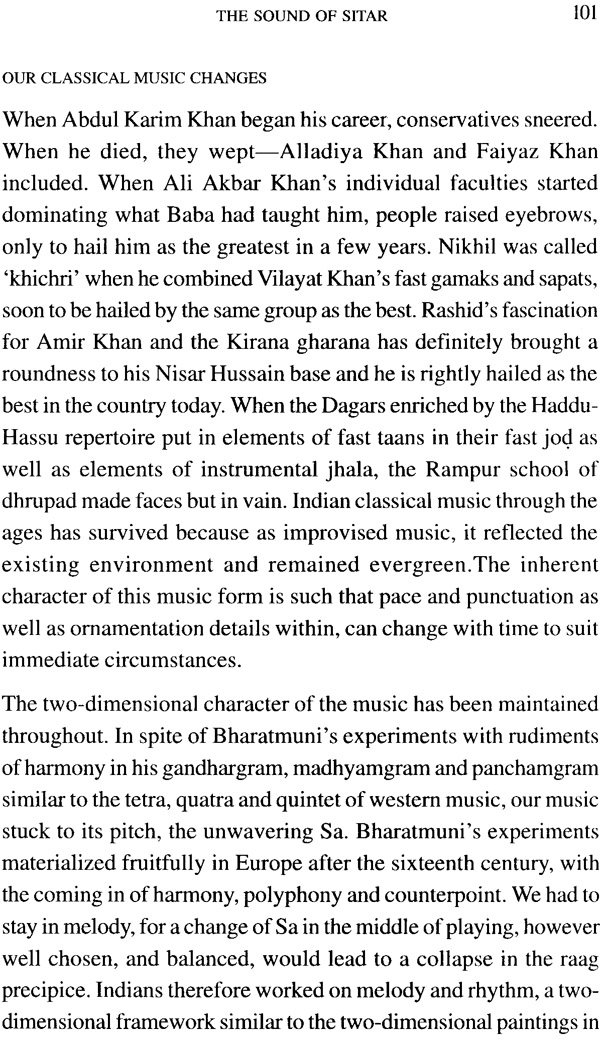
The Sound of Sitar
Book Specification
| Item Code: | NAN508 |
| Author: | Subroto Roy Chowdhury |
| Publisher: | Thema Books, Kolkata |
| Language: | English |
| Edition: | 2014 |
| ISBN: | 9789381703342 |
| Pages: | 112 |
| Cover: | Paperback |
| Other Details | 8.5 inch x 5.5 inch |
| Weight | 170 gm |
Book Description
In a freeflowing, lucid and critical overview, Subroto Roy Chowdhury, sitarist and musicologist, traces the evolution of the sitar in a fast evolving musical scenario, under the direct impact of historical forces; and the emergence of the technologies of mechanical reproduction and dissemination of music. The technically insightful distinctions the scholarly performer underscores in the styles of the major vocalists and instrumentalists of the twentieth century-most of whom he has heard and whose music he has meticulously examined-are solidly grounded in a close study of how several memories, traditions, influences and reverberations have gone into the making of these styles; allowing listeners and performers alike a more sensitive understanding of the distinct nuances of the different individual sitar Styles in the classical Indian music circuit.
SUBROTO ROY CHOWDHURY (b. 29 January 1943) received his talim in sitar continuously for twenty years- from the late Kumar Birendrakishore Roychaudhuri. He had the rare privilege of coming into close association with another legendary maestro Ustad Hafiz Ali Khan. Eventually he became a gandabandhan shagird of Ustad Nasir Aminuddin Dagar. In a signed note, Ustad Ali Akbar Khan complimented him on his dedication to the 'authentic Dhrupad tradition,' and 'his uncompromising attitude' that 'will surely help raise the awareness of the next generation to our Vedic tradition.'
As a music critic, he has contributed to some of India's major dailies and periodicals. He began teaching in the mid-1970s, lecturing at the Birmingham Conservatory, the Freie Universitat, Berlin, Kassel University, and the Ali Akbar College of Music in California, before setting up his own school in Berlin, where he now lives and teaches. He has more than a dozen CDs published in India, Germany and the USA; and performs concerts regularly in India, Europe and the USA. His record of fusion music, Explorations (1987), with the late Steve Lacy, soprano saxophonist. has remained a bestseller.
Contents
| Looking Back | |
| Hafiz Ali Khan | 4 |
| Mixed gharanas | 16 |
| John Gomes | 17 |
| The sitar of western India | 18 |
| Radhikamohan Maitra | 22 |
| Babbu Sahab | 23 |
| Amjad Ali Khan | 24 |
| Munawar Ali Khan and Imrat Khan | 26 |
| Bahadur Khan | 27 |
| Recent entrants and the future | 29 |
| The Musical Scene in The Twentieth Century | |
| Alap: concept and construction | 34 |
| Bade Ghulam Ali Khan | 41 |
| Enhancing the performance | 43 |
| The Dagar Gharana | 45 |
| The tabla and the sarangi | 48 |
| The sitar and Ravi Shankar | 51 |
| The Niyamatulla Khan sarod gharana | 53 |
| Shortening of traditional compositions | 54 |
| String arrangement in sitar and veena | 56 |
| Mushtaq Ali Khan | 58 |
| The sitar today | 59 |
| Alauddin Khan | 60 |
| Imdad Khan | 61 |
| The sitar and Vilayat Khan | 65 |
| The changing course of Indian classical music | 66 |
| Taans and tod as | 73 |
| Hierarchy in music | 73 |
| Surbahar, sitar, sarangi | 75 |
| Enayat Khan | 76 |
| Vilayat Khan | 83 |
| Standardization | 88 |
| Ravi Shankar | 89 |
| Nikhil Banerjee | 92 |
| Sitar players of Bengal | 96 |
| Gharanas and styles | 98 |
| Our classical music changes | 101 |
Sample Pages
